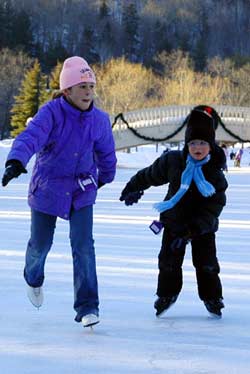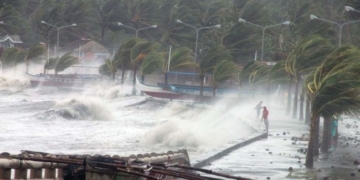On a flat ice surface, it is actually easier to slip than on a regular floor. One might think that smooth ice should be less slippery than uneven, bumpy ice. However, the reality contradicts this assumption.
 |
|
The smaller the area over which a weight is applied, the greater the pressure it exerts. |
If you have the opportunity to pull a heavily loaded ice sled across a bumpy ice surface, you will notice that the sled moves much more easily on the flat ice. In fact, the bumpy ice is smoother than the flat ice! This can be explained as follows: the slickness of ice does not depend on its flatness but is entirely due to another factor: the melting point of ice decreases under increased pressure.
Let’s analyze what happens when skating on ice skates or using a sled. When standing on ice skates, we balance on a very small area—only a few square millimeters in total. Our entire body weight compresses this tiny area, creating a significant force. Under high pressure, ice melts at lower temperatures. At this moment, a thin layer of water forms between the skate blade and the ice, allowing the skater to glide.
Moreover, as the skater’s foot moves to a new location, a similar phenomenon occurs: the ice underfoot turns into a thin layer of water. Among all materials found in nature, only ice possesses this unique property. A Soviet physicist referred to it as “the only slippery material in nature.” Other materials may be flat, but they are not slippery.
Now, let’s return to the question of which is smoother: flat ice or bumpy ice. Theoretically, the same weight applied over a smaller area generates greater pressure. So, does the skater exert greater pressure on flat ice or bumpy ice? Clearly, the pressure is greater on the bumpy ice. This is because they are only pressing down on a very small area where the ice is raised or protruding. The greater the pressure on the ice, the faster it melts, making it smoother (assuming the skate blade is wide enough).
However, if the blade is narrow, the above explanations do not hold. In this case, the blade will cut into the raised areas of the ice, and energy used for movement is lost in cutting into the ice.


















































